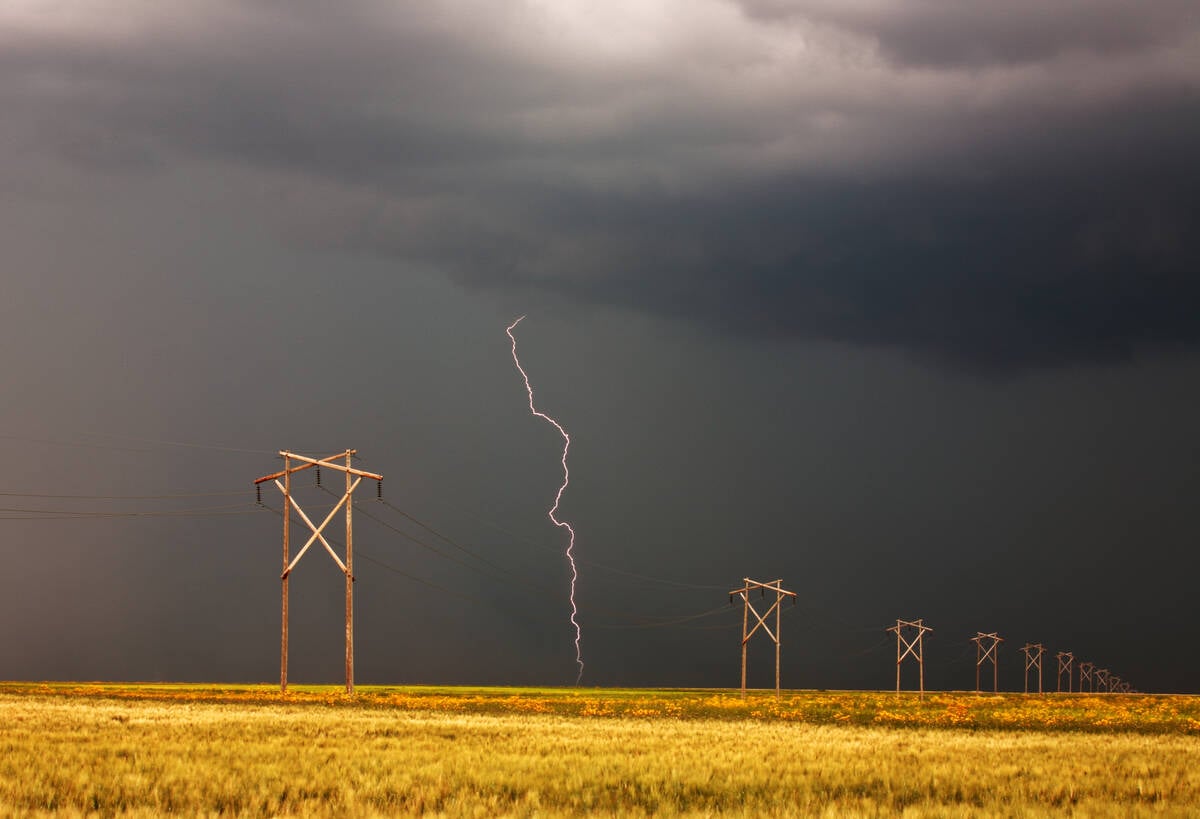Amaranth is extremely nutrient-rich. It was important to the Aztecs, and is still cultivated in South America and Mexico. It germinates easily, grows rapidly and produces huge numbers of seed.
But the crop that sustained the Aztec economy famously wreaked havoc on the American cotton industry, and is now affecting corn and soybean producers in 29 states, including Iowa and South Dakota. Glyphosate resistant Palmer amaranth has been found as far north as Minnesota. It hasn’t reached Ontario or Manitoba yet, but it’s on the doorstep.
Read Also

Lightning gives and takes in Prairie fields
Lightning in fields can be a source of nitrogen but at times can result in crop damage which, at a glance, resembles a very localized disease outbreak, plant pathologist Ieuan Evans writes.
“It’s spreading north very rapidly,” says Hugh Beckie, a specialist in herbicide resistant weeds with Agriculture and Agri-Food Canada.
Peter Sikkema, a weed scientist at the University of Guelph’s Ridgetown campus, says Palmer amaranth has been confirmed within a couple hundred kilometers of the Ontario/Michigan border, but hasn’t been found in Ontario as of yet.
Sikkema says producers and researchers alike are aware of the threat, but as the weed might not arrive in the province imminently, other weed challenges are being prioritized.
The same goes for Manitoba, according to Beckie. “We have no results from the Prairies as far as I know, but if it did come up it would be through the floodwater in the Red River Valley,” he says.
It could also travel north via contaminated crop seed. Such is the case in Minnesota, where Palmer amaranth was spotted in areas planted in a federal conservation program late last year. The contaminated seed was traced back to a single company that remains unidentified due to the state’s ongoing investigation.
Action in Minnesota
Minnesota has hit back hard against Palmer amaranth, says Brian Jenks, a weed scientist with North Dakota State University. Minnesota’s state agriculture department has classified the weed as noxious and is actively hunting and destroying it in compromised areas.

It’s an approach Jenks hopes North Dakota will adopt if the weed becomes an issue in that state. Last fall, extension researchers got a scare when they heard the weed had been introduced to Iowa via contaminated conservation seed mixes — the same mixes planted by producers in some North Dakota counties.
Jenks says they obtained a list of producers in October who had planted the seed mix in question and alerted them of the risks. But only some fields were scouted before the winter, which means producers and extension staff will be on the lookout in the state this spring.
“It may be an issue here, but we don’t know yet,” says Jenks.
North Dakota is unlikely to treat the weed with the same level of seriousness as Minnesota, he believes, but he says that would be a mistake.
“The way I look at it, we have one chance to control it,” he says. “If we just let it go it’s going to take over, so I think we need to be very proactive. If it does show up we need to work with those growers and do everything they can to help them eradicate the weed.”
This will be difficult, considering many North Dakota producers don’t know how to identify the weed.
“They probably won’t know what they’re looking for until it’s in their fields standing six or seven feet tall,” says Jenks.
Rob Gulden, a University of Manitoba weed scientist, says it’s tough to know how much of an issue Palmer amaranth will be for Prairie producers before it actually becomes established north of the border. “We don’t know much about the biology of Palmer amaranth this far north or how well it will do here,” he says.
Palmer amaranth is not as high on his list of concerns as other, more imminent weed threats, such as tall waterhemp, giant ragweed, common ragweed, kochia and Canada fleabane, all of which have been found right on the Manitoba-North Dakota border, and all of which are glyphosate resistant.
Next year, with renewed Growing Forward funding, Gulden’s research team plans to monitor Red River Valley floodwater for all of these weed threats, including Palmer amaranth.
















